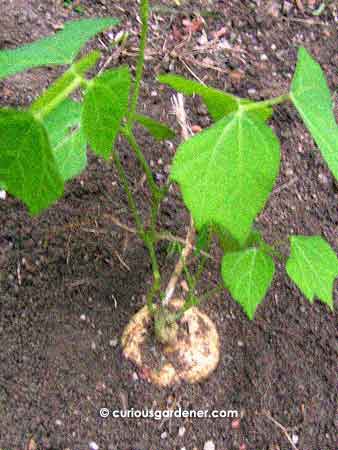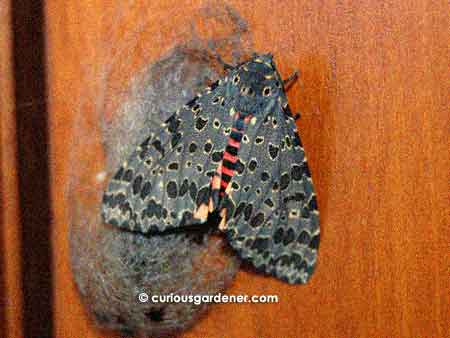
Just some of the hills of compost that we saw
I was quite privileged to receive an invitation from GreenBack – the folks I got my ton of compost from – to visit their production facility out at Sarimbun Recycling Park this week. Since the invitation was an open one, I gathered my posse consisting of Skyfiery, Curious Mama and Curious Friend – collectively known as the Kaypoh Gardeners  – and we made our way towards Lim Chu Kang. It was actually a very pleasant drive, taking us through Kranji – one of the last rural areas in Singapore. We also had the best kind of weather for our visit – cloudy! So it wasn’t wet, too humid or blazingly bright.
– and we made our way towards Lim Chu Kang. It was actually a very pleasant drive, taking us through Kranji – one of the last rural areas in Singapore. We also had the best kind of weather for our visit – cloudy! So it wasn’t wet, too humid or blazingly bright.
It was also my first time driving into a heavy industrial area – the recycling park. Negotiating the uneven road surface while heavy vehicles were going by was definitely an interesting experience! But then, so was the rest of the afternoon!
We were warmly welcomed by the team at Greenback on our arrival, and sat down to a brief video introduction of their stand on environmentalism and what they do. Then, we got to watch a huge, 2-storey machine at work, sanitizing rows and rows of compost lying out in the sun. This, we learned, was how they generate compost within 14 days. Yes, 14 days. Check out how it’s done:
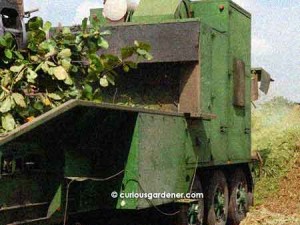
Green waste comes in the form of pruned trees and plants. The heavy wood is separated and the remaining green leaves and smaller, lighter branches get shredded.

Next, the green compost is laid in rows on a concrete surface, where the huge 2-storey pasteurizing machine processes it daily for 12 days. Subjecting the compost to high heat above 55 degrees Celsius not only kills pests, pathogens, weed seeds, and harmful bacteria, but it also helps the composting process, which normally generates heat anyway. It just speeds up the process from 3-6 months to 14 days!
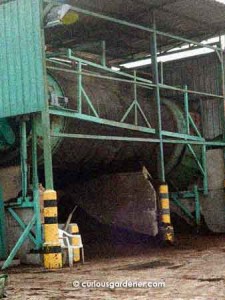
Compost gets sorted through giant rotating sieves into grades of fine, medium and coarse. All of them are good for soil amendment, but fine is also good for growing seedlings, medium for mulching and top dressing, and coarse for amending clayey soil.
If you’re wearing the right kind of footwear (covered) and are adventurous enough to walk around working heavy machinery, you can go on the hard hat walkabout tour, as the Kaypoh Gardeners did. It was a bit daunting as the vehicles and machinery are in constant movement, albeit in a very orderly manner.
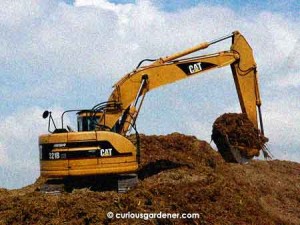
Excavator perched on a huge hill of green compost.
However, if you don’t go on the walkabout, you won’t get to see the garden at the back…
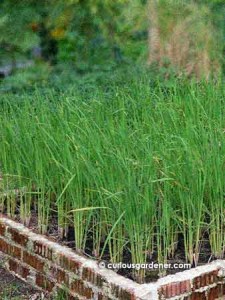
Experimental padi plot
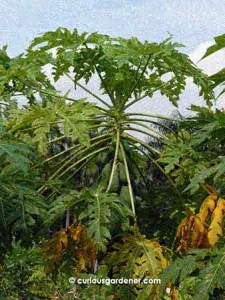
One of many loaded papaya trees

Tapioca plants
And lots of other fruits and vegetables that included the most tender spinach I’ve ever eaten! What better product testimonial than to grow edibles using your own compost?

There is also a veggie plot in front.
You know, when I thought about going to a compost processing plant, I was worried that it would be a smelly place. Yes, there was a strong odour, but it was the same sweet, rich fragrance that my ton of compost had when it first arrived. Rather than feel overwhelmed by a different scent, I found it very pleasant – aromatherapy for a gardener, if you will…
In case I didn’t state it clearly enough, this compost is generated only from organic, green (plant) waste. Care is taken to remove foreign objects – by hand, as we observed some trash items removed from the green waste before it was shredded, and by magnets in the sieving machines, in case metal objects are still in there. Almost in contrast, another composting facility across the road had huge piles of compost sitting in the open elements with debris plainly visible in the piles. It was food for thought…
The reason we were invited is that GreenBack wants to reach out to “greenies” like us, and to educate people on what compost should be and how it can be used. We felt so honoured to hear that we were the very first group to have this tour of their production facility. I know that many of us practice composting on a small scale, but it’s eye-opening to see how the big-timers do it. If you’re as curious as we are, drop the GreenBack folks a note so you can also go see why they’re a certified recycled organic fertilizer producer.
Nehemiah, Allan, Enoch, Lileth and everyone at GreenBack, thank you for such an interesting afternoon!
Oh yes, check out Sky’s take on the outing as well.
A final note: your plants give back to you what you give to them. Whichever brand of compost you buy, check out the components to see what is put in there, because the term “compost” means different things to different manufacturers.
© 2011 curiousgardener.com All rights reserved.











